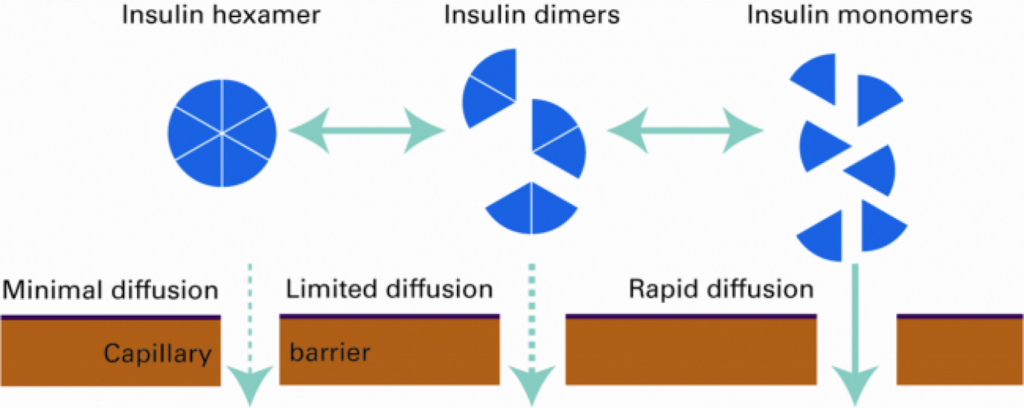Medical advances can come from the most unlikely places. Nowhere is this more apparent than trends in diabetes management. Since 2005 the FDA has approved exenatide, a synthetic form of a natural peptide occurring in the saliva of the Gila Monster lizard (found in our own state of Arizona), for the treatment of Type 2 Diabetes. Exenatide is an incretin hormone that regulates insulin release and is used as an adjunct agent in patients that are unable to maintain optimal glucose control with some combination of either metformin or a sulfonylurea. [2]
The utility of exenatide and other glucagon-like peptide agonists is fascinating and reinforces that modern medicine can potentially learn a great deal from nature and its millions of years of evolution. Indeed, there is current research to suggest diabetes management may yet again benefit from natural compounds isolated from animals. Fresh research published in February 2019 has documented the therapeutic potential of a newly discovered insulin from the venom of the humble cone snail.
The cone snail (Conus geographus) lives at the bottom of the ocean and is a slow-moving carnivore. It catches its prey by a concealing itself in the sand before launching a harpoon attack. In one swift movement, the harpoon releases a potent cocktail of 200 different toxin-compounds designed to rapidly disable its target. Among these toxins is a fast-acting insulin that plunges the prey into hypoglycemic shock, lowering its blood sugar so dramatically that it cannot escape. The snail then emerges from its hiding place to consume the prey whole.
“We stumbled across the insulin in the venom,” notes Helena Safavi-Hemami, Ph.D., senior author of the paper and an assistant professor of biochemistry at the University of Utah. Her team has demonstrated that each cone snail species produces slightly different insulin sequences and that at least seven different unique insulin sequences have been isolated so far. Each type of cone snail insulin has been shown to activate the human insulin receptor with modes of action that are distinct from any other known insulins in nature.[1]
The cone snail insulins are extremely fast acting despite being 10 to 20 times less potent than human insulin. Human insulin molecules form hexamer clusters when they are released. These clusters first must dissolve into individual units in order to activate the insulin receptor to regulate serum glucose. This delays the effect of the insulin until dissolution occurs. Unlike human insulin, the snail insulin doesn’t cluster into an oligomer which allows its ultra-fast action.[3]

Since the discovery, Dr. Safavi-Hemami’s research team has explored the therapeutic implications for the cone snail insulin. “We are beginning to uncover the secrets of cone snails,” she said. Due to their streamlined role in capturing prey, snail venom insulin may exhibit other advantageous properties that could aid current drug design efforts. Further research is needed, but the team has identified one compound they hope will proceed to clinical testing.[1] They also hope to develop other compounds that could be used to treat Type 1 diabetes. Once again, mankind has been inspired by the unique designs of nature to inspire modern medicine. This research holds exciting possibilities for the future of diabetes management.
Cover photo credit: https://www.flickr.com/photos/animaliaproject/
- Ahorukomeye, Peter et al. Fish-hunting cone snail venoms are a rich source of minimized ligands of the vertebrate insulin receptor. Elife. 2019 Feb 12;8. pii: e41574. doi: 10.7554/eLife.41574.
- Triplitt, Curtis & Chiquette, Elaine. Exenatide: From the Gila Monster to the Pharmacy. Journal of the American Pharmacists Association. Volume 46, Issue 1, 2006, Pages 44-55, ISSN 1544-3191, https://doi.org/10.1331/154434506775268698.
- Holleman, Frits. Short-acting insulin analogues [internet]. 2014 Aug 13; Diapedia 8104096115 rev. no. 18. https://doi.org/10.14496/dia.8104096115.18
Tyson Amundsen is the only member of the class of 2019 who hails from Utah and is extremely proud of it. He spent two years living in Los Angeles, California, serving as a missionary for the Church of Jesus Christ of Latter-Day Saints before graduating from the University of Utah with a degree in Latin American studies. His passions include skiing and soccer, but he'll settle for just about any outdoor activity. His professional interests include bioethics and religious liberties in medicine.


